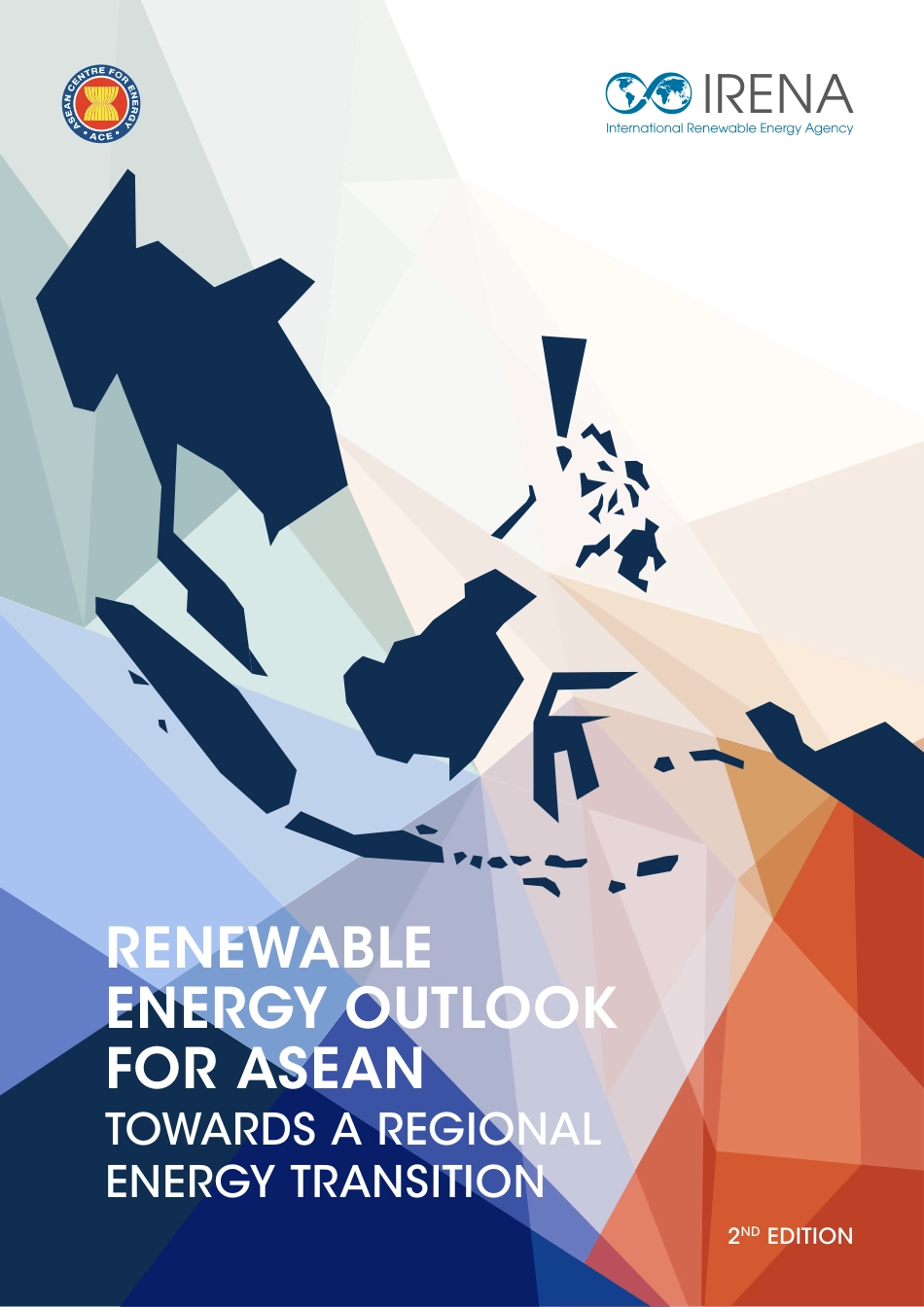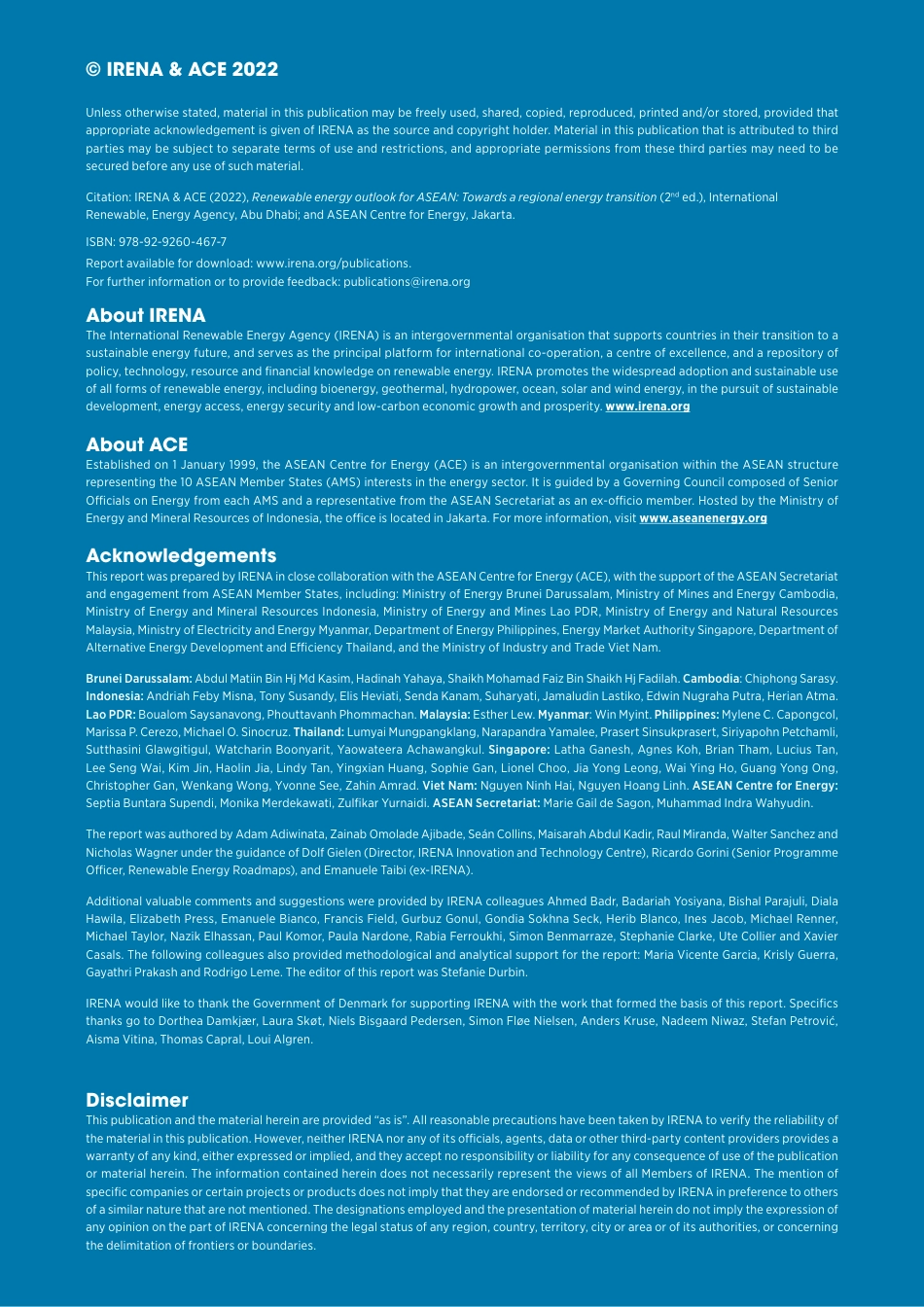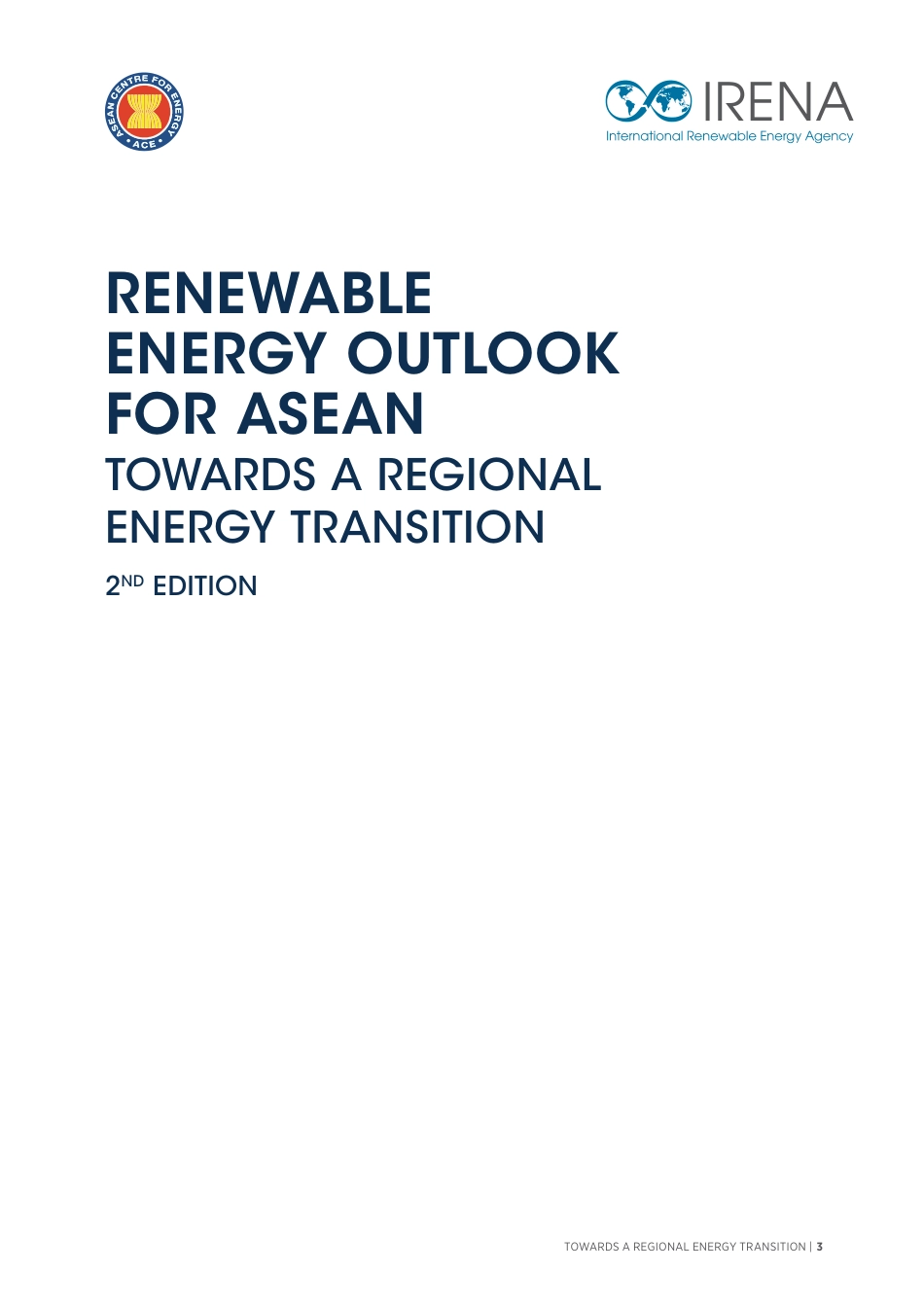RENEWABLE ENERGY OUTLOOK FOR ASEANTOWARDS A REGIONAL ENERGY TRANSITION2ND EDITION© IRENA & ACE 2022Unless otherwise stated, material in this publication may be freely used, shared, copied, reproduced, printed and/or stored, provided that appropriate acknowledgement is given of IRENA as the source and copyright holder. Material in this publication that is attributed to third parties may be subject to separate terms of use and restrictions, and appropriate permissions from these third parties may need to be secured before any use of such material.Citation: IRENA & ACE (2022), Renewable energy outlook for ASEAN: Towards a regional energy transition (2nd ed.), International Renewable, Energy Agency, Abu Dhabi; and ASEAN Centre for Energy, Jakarta.ISBN: 978-92-9260-467-7Report available for download: www.irena.org/publications. For further information or to provide feedback: publications@irena.orgAbout IRENAThe International Renewable Energy Agency (IRENA) is an intergovernmental organisation that supports countries in their transition to a sustainable energy future, and serves as the principal platform for international co-operation, a centre of excellence, and a repository of policy, technology, resource and financial knowledge on renewable energy. IRENA promotes the widespread adoption and sustainable use of all forms of renewable energy, including bioenergy, geothermal, hydropower, ocean, solar and wind energy, in the pursuit of sustainable development, energy access, energy security and low-carbon economic growth and prosperity. www.irena.orgAbout ACEEstablished on 1 January 1999, the ASEAN Centre for Energy (ACE) is an intergovernmental organisation within the ASEAN structure representing the 10 ASEAN Member States (AMS) interest...



